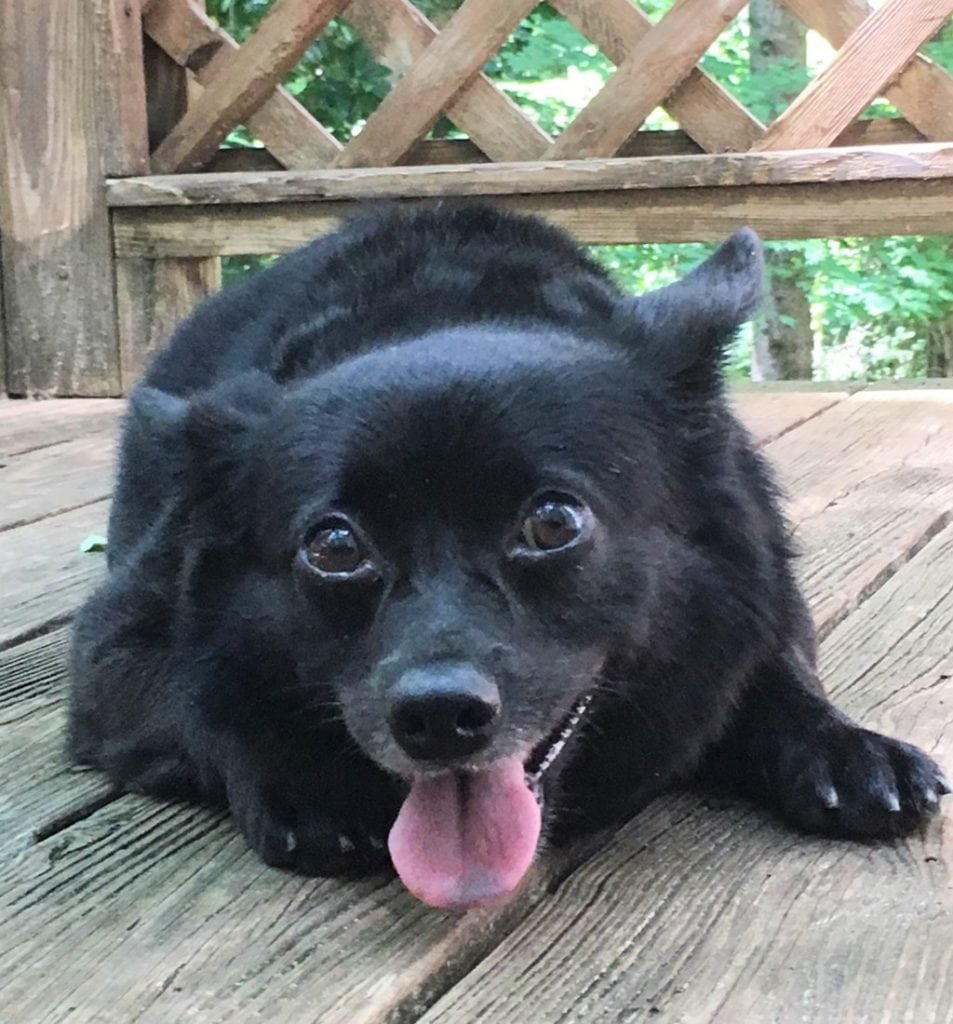Earlier this summer, I killed my beloved, happy dog.
It wasn’t on purpose, and it wasn’t violent. One June evening I took him and our other dog for a run. We jogged 4.5 miles, a distance we’d easily covered together in the recent past. But even though it was twilight, temperatures were still in the lower 80s. I didn’t bring water for us, and I didn’t let them stop and rest until we reached the top of our street again. One dog, who has a thin coat and was bred to run, was panting, but okay.
The other collapsed on the asphalt and didn’t recover.

Most of us know how dangerous heat can be. We know to limit our time outside on hot days, carry water if we’re spending a significant portion of the day outside, and seek cool shelter for a rest if we start feeling disoriented. But how often do we think about heat safety for our pets? How many times do we remind ourselves that they’re not built like humans, and how often do we take the necessary precautions to ensure they can enjoy the dog days of summer without succumbing to the heat?
I would give anything to re-do that night and take better care of Zipper. The silver lining that shines through my guilt is that my husband and I now know what overheating in dogs and humans looks like, how to prevent heat stroke in dogs and how to treat it. We never want to experience this accident again, and we don’t want anyone else to lose a dog the way we ignorantly did.
How to prevent and treat overheating in dogs:
1. Know your dog’s limits.
Your dog might love playing fetch, frisbee or tag with you, but unlike humans, they often won’t stop playing once their body is hot and exhausted. So it’s up to you to make them take a break, drink some water, and rest in a shaded, cool place. Watch your dog closely, and when you notice them panting heavily, have him or her lie down on a cool surface with access to plenty of water for at least 20 minutes before you resume physical activity.
Aging dogs need closer observance and more precaution than puppies because they overheat more quickly than younger dogs. Older dogs can suffer from heatstroke in a shorter amount of time or exercise than their younger selves, too. My Zipper used to accompany me on 6-mile runs as a 2-year-old dog, so in my mind, a 4-mile jog was no big deal—except that he was 7 the night he died. Watch your older dogs closely as they run and play, and encourage them to take a break more often than you think is necessary.

2. Have plenty of water on hand.
Even if it’s inconvenient, provide water for your dog if you’re exercising Fido or keeping him outside. Place multiple water bowls around your yard. If you leash your dog to a yard stake, make sure the bowls are full and within your dog’s reach. Invest in an inexpensive portable water dish and bring it with you on runs, to the dog park, on the trail, and in the car. I don’t leave the house with my toddler without a sippy cup of water or milk. I wish I had extended that same precaution to my dog.
3. Plan when and where your dog can rest.
This could be your kitchen floor, your mudroom, or your garage. It could be a shaded area in the dog park or along your regular jogging route that you know is a reliable place to stop for a few minutes rest. If your dog likes water, let them wade into a cold pond, river, lake, swimming pool or ocean. The cold water will help draw away their heat faster than air.
4. Help your dog cool down.
In addition to offering water to drink, you can gently splash water on your dog’s head, ears, stomach, and paws to help them cool down. Try draping cold, wet towels over their midsection, or run cool water from a hose over them. (Flush out any hot water resting in the hose before you turn it on your dog!) Rub their paw pads with a wet towel. Direct a fan on them. If you’re outside, bring them into an air-conditioned building, or into the basement of a non-air-conditioned building.

5. Know the signs of overheating.
Dogs don’t sweat like humans: They pant to move air through their body and regulate their temperature. Excessive panting (either heavier than what’s normal for your dog or panting longer than 30 minutes), vomiting, and diarrhea are all signs of a dog that’s too hot. Your dog’s gums can turn bright blue or red, or they can become pale and dry. They might become dizzy, convulse, or collapse.
A dog’s normal temperature is 101°F. When their temperature reaches 103°F, they are overheated. When their temperature reaches 106°F, irreversible organ damage, including swelling of their brain, is very likely. You don’t want to hear the emergency vet tell you that your dog’s temperature registered at 108°F like our vet told me.
At 105°F, dogs are susceptible to heat stroke. Heat stroke looks like panting, plus:
- Hypersalivation (lots of drooling)
- Warm to touch
- Red gums
- Rapid heart rate
- Dry nose
- Laying down and unable to get up
- Vomiting
- Bloody spit or stool
- Seizures
- Muscle tremors
- Confusion or staggering around
- Coma
If you see any of the above symptoms in your dog, it’s time to go to the vet – immediately.
6. Know where the closest emergency veterinarian is located and their hours.
I wish I’d had the address and phone number of our nearest emergency vet tacked to our refrigerator or stored in my phone. Knowing this information would have saved us precious minutes the night Zipper died. Instead of pacing our living room while Googling and dialing multiple emergency vets simultaneously on my and my husband’s phones while he performed CPR on my non-breathing dog in the kitchen (I will forever love my husband for that), we could have hustled into the car right away if we’d looked up that information just in case long ago.
If you have a dog, cat, bird, horse or any other animal, stop reading this and search out your nearest emergency vet now. Write down their address, hours, and phone number. Store that information in your contacts, or tape it to a visible place on your refrigerator or family command center. Time is precious when trying to revive an overheated pet, and you don’t want to waste it figuring out where to go for care.
If you must rush your dog to an emergency vet, have a passenger call to tell them you’re on the way and will need immediate attention. As soon as you step inside the vet’s building, tell them your pet has overheated and needs help right away. Our emergency vet was excellent about rushing out to take Zipper to an exam room and immediately administering CPR, fluids, medication and electric shocks. Although he didn’t make it, we appreciate their rapid response.
Dogs are family, too
Zipper was my first baby and just as much a part of our family as my human baby. Like most dogs, he loved without conditions or reservations and didn’t deserve to cross the rainbow bridge the way he did. My toddler now has one less lovable guard dog, and I have a Schipperke-shaped hole in my heart. If you haven’t already, please take these precautions to save your dog from overheating and heat stroke. No one should lose a canine companion like we did.


















